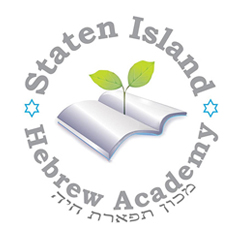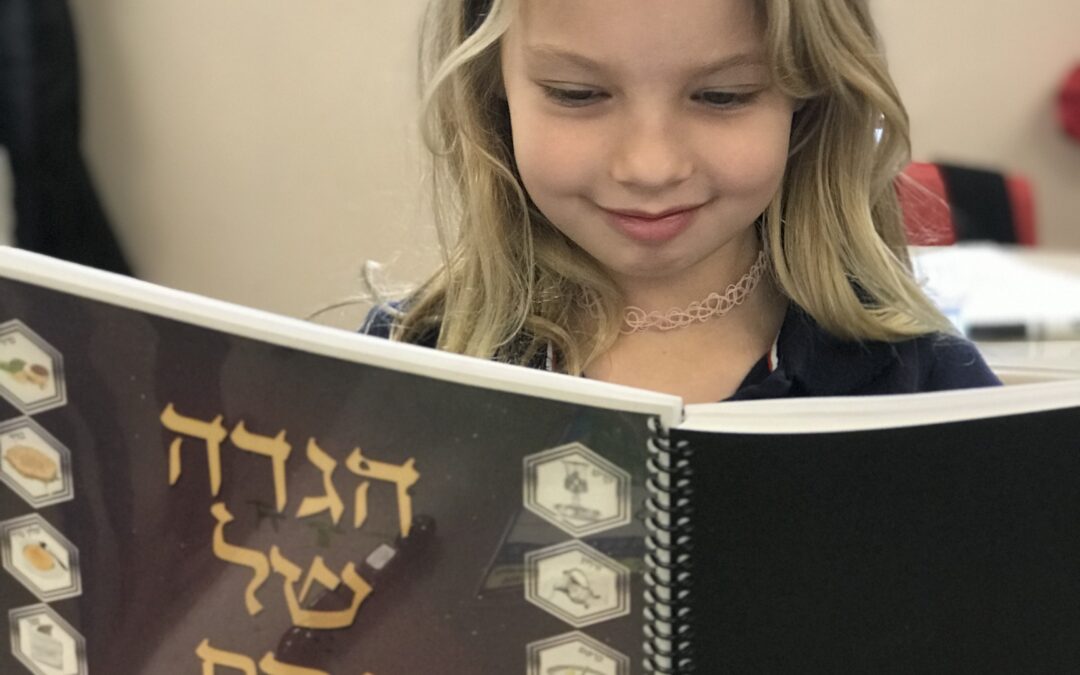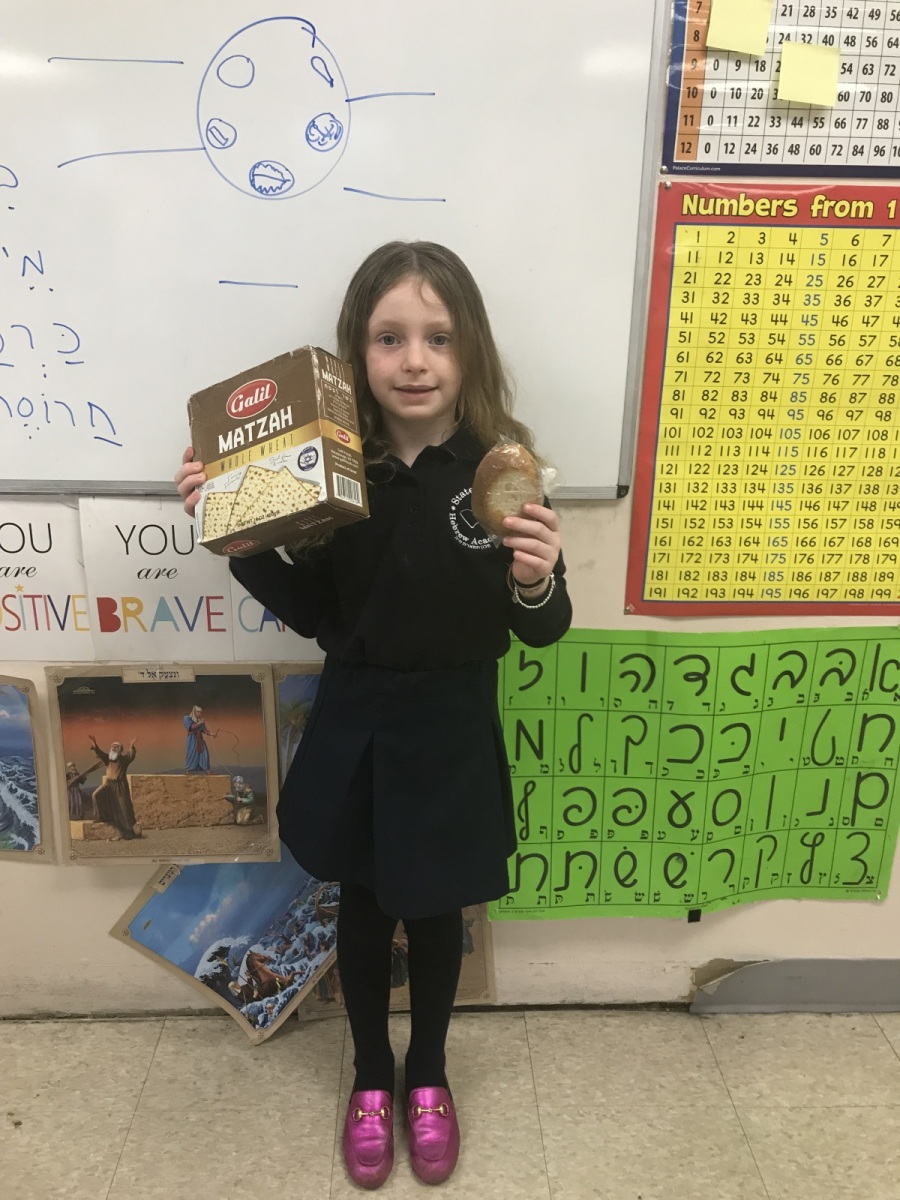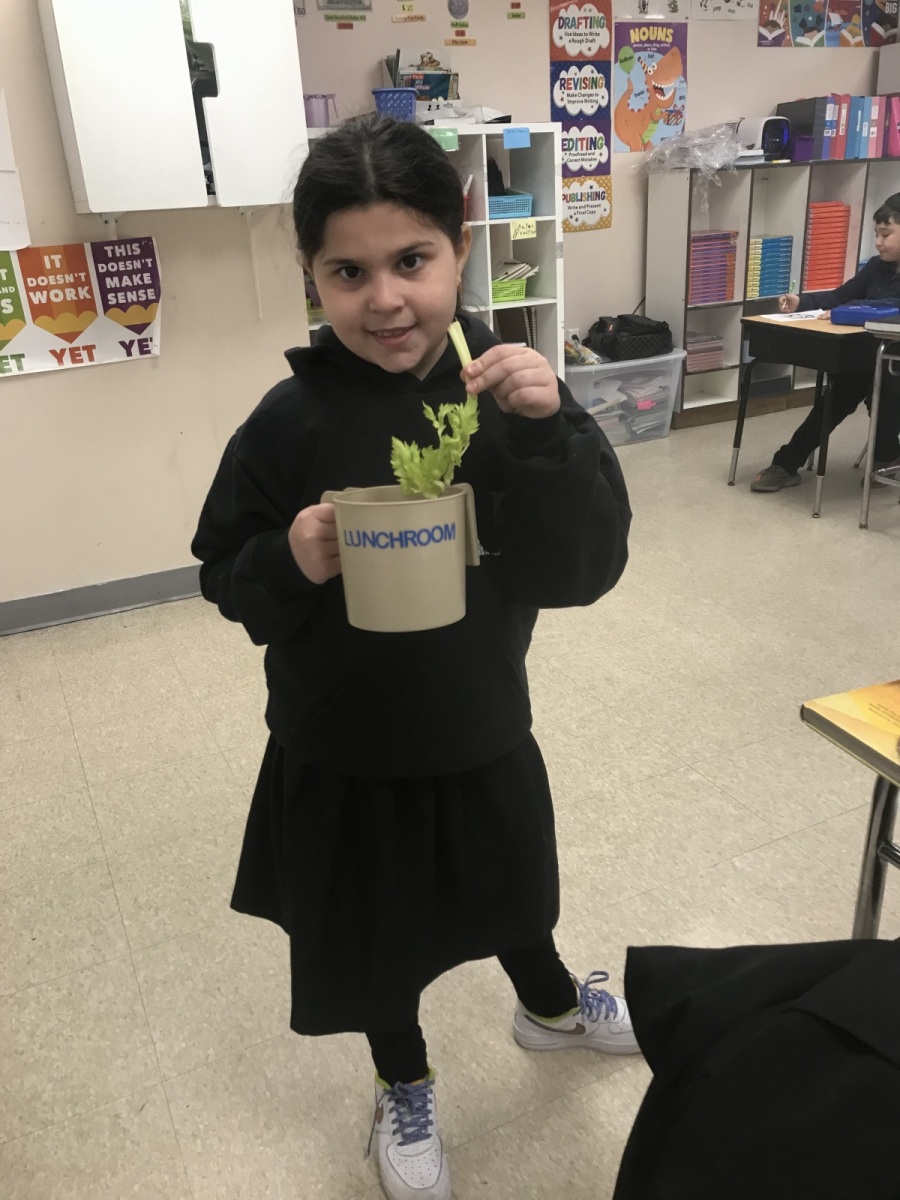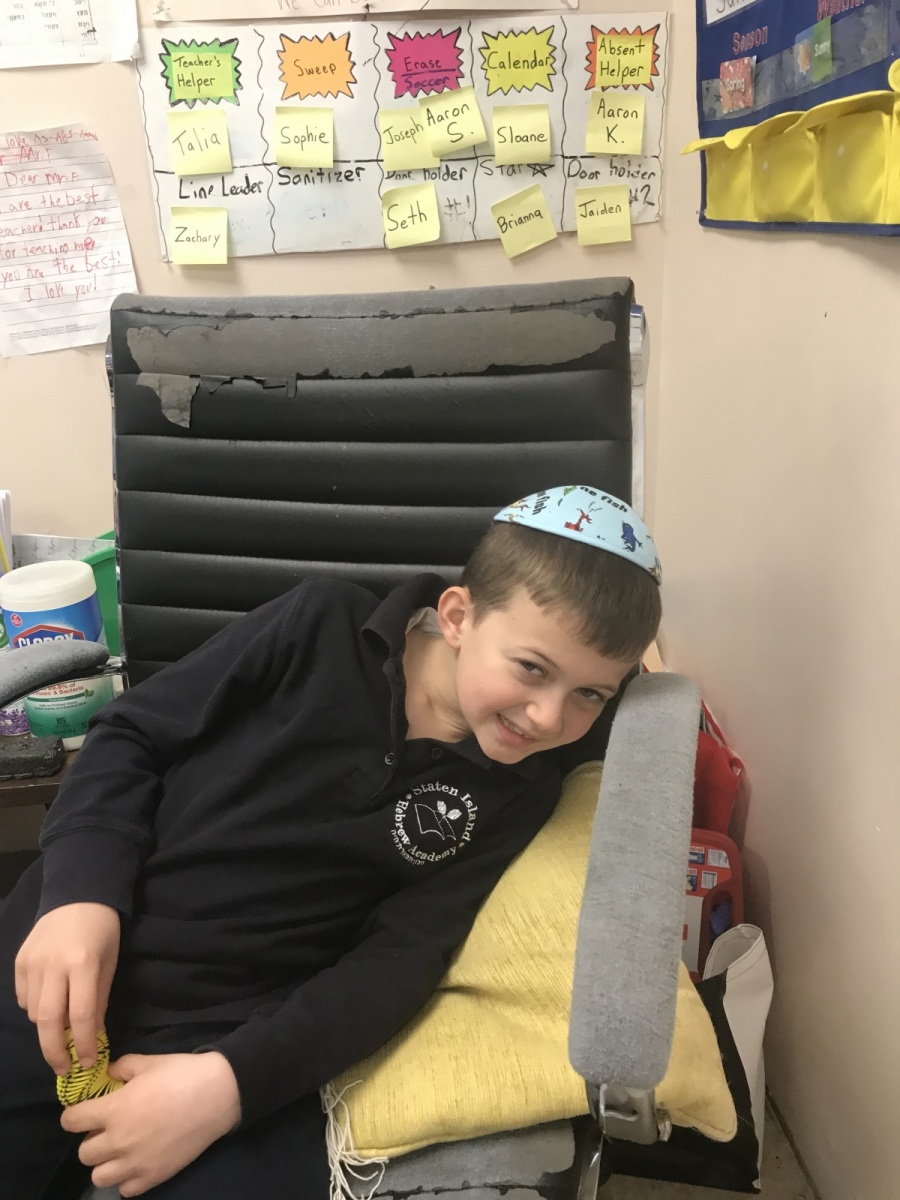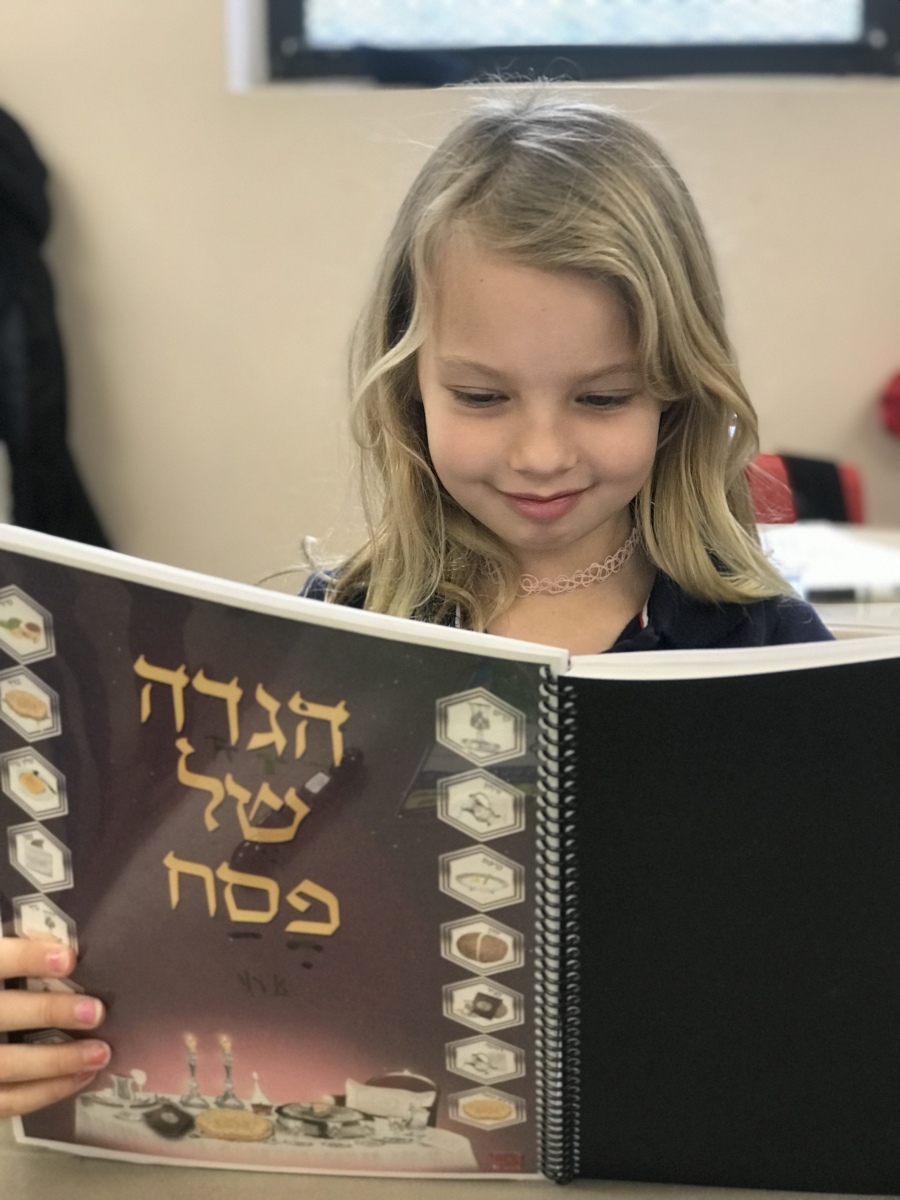Dvar Torah
Parsha Metzorah
Candle lighting: 7:10
Havdalah: 8:11
A good erev Shabbat SIHA Families!
Please allow me to share with you a Dvar Torah that inspired me this week and coincidentally ties to our weekly Parsha by Rabbi Dr. Mordechai Schiffman;
Embedded in the complex and esoteric laws of tzara’at (leprosy) is a simple, yet powerful message related to the power of speech. Although the verses themselves do not explicitly state what spawns tzara’at Chazal associate it with seven sins, perhaps most famously with lashon hara, derogatory speech (aka slanderous gossip).
The detrimental effects evil speech has on others is obvious. While we may have difficulty being mindful or controlling what we say, few people would deny the unethicality of hurtful speech. Yet lashon hara is not just problematic for its interpersonal effects. It is also sourced in a deficiency of character. One of the other seven sins responsible for tzara’at is that of arrogance. These two sins may be linked. Speaking ill of others may reflect an arrogant personality.
Dr. James W. Pennebaker is a leading psychologist in the field of language and personality. Using complex computer programs, he analyzes people’s word usage to mine an individual’s thoughts, feelings, motivations, and relationships with other people. Pennebaker demonstrates in several studies that the words we use not only affect others but reflect our selves.
The use of hedges in our sentences is one example of this idea. When asked “what’s the weather like outside?”, we could respond “it’s cold” or we could respond “I think it’s cold.” In his book The Secret Life of Pronouns: What Our Words Say About Us, Pennebaker argues that when we say “I think it’s cold” instead of “it’s cold,” we are implicitly acknowledging that “Although there are different views on this – and you may indeed come to a different conclusion – my own personal belief is that it might be cold outside. I could be wrong, of course, and if you have a different sense of the weather, I won’t be offended” (p. 44). “I think” implies nuance. It leaves room for multiple perspectives and different opinions. In short, it reflects humility.
When describing the laws of tzara’at as it relates to houses, the verse tells us that when a person sees something that looks like tzara’at, he approaches the Kohen and says “Something like a plague has appeared upon my house” (Vayikra 14:35). Even if the person approaching the Kohen is a scholar who knows conclusively that it is a plague, says the Midrash, he should still hedge his statement. He shouldn’t say I saw a plague. Rather, he should say, I saw something like a plague.
Rabbi Eliyahu Mizrachi (15th century, Constantinople), in his super-commentary on Rashi finds a moral message within the Midrash. The Torah is teaching us proper behavior (derech eretz): we should speak using hesitant language. He connects it to another comment of the Sages, namely, that we should train ourselves to say, “I don’t know” (Berachos 4a). Hedging our statements and admitting when we aren’t sure of something, Rabbi Shimshon Raphael Hirsch explains further, reflects a humble character.
In what is becoming an increasingly toxic social and political climate, the suggestion of the Sages rooted in the Biblical text provides us a framework for proper character and effective communication. While there may be a place for indisputable facts and speaking with conviction, if we find that everything we think and say is a definitive truth in our own eyes, it may be time to take a step back and reflect. Is it a plague or something like a plague? Am I so sure of everything or maybe I can admit that I really don’t know? If we can hedge our communication with a hint of humility, we will be well on our way to cultivating our own character and improving our relationships with others.
Chag Kosher V’Sameach,–
Chana Uzhansky Ed.D.
Head Of School
Special Announcement

Judaics
Kindergarten and First Grade
We baruch Hashem had another great week in Kindergarten and first grade Judaics!
We were super busy learning all about Pesach! It’s coming up really fast! We are making a beautiful haggada and are learning how to say the entire ma nishtana! We are doing such a great job! We also learned how the focus of the seder is for the children to ask questions about all our practices on Pesach. I’m so proud of all the wonderful questions about Pesach that the children are asking.
In kriah, the kindergarteners are learning the letter tzaddik soffit, the last of the soffit letters. The first graders are getting much better at reading big words!
The first graders also learned how to write the letter ayin in Akiva Kesiva letters!
Great news: the boys learned how special the mitzvah of tzitzit is and how lucky they are to have this mitzvah. They each got their own pair of tzitzit to wear in school the entire day! They look great!
Have a wonderful Shabbat and a chag kasher v’sameiach!
Morah Chavi
Second Grade
The week flew by as we worked very hard on completing our Haggdahs. We can’t wait to use them at the Pesach Seder and show you how much we know about Pesach. We learned many new songs to be sung at the Seder as well as learning many older traditional songs. On Monday G-d willing we will be making our own model Seder at school. Don’t worry we still practiced our Kriya and learning many of the Shva rules. Have a Chag Kosher V’Somaich. A Healthy and Inspiring Pesach.
Third Grade
This week flew right past us in Third grade. We learned Haggadah and more about Pesach.
They can’t learn enough. We pack it in and really enjoy it.
We practice many songs to sing at the Seder.
We all look forward to next week where we will be having a Mock Seder in our classroom. We will get to practice what to do at the seder with our families.
Have a wonderful weekend and Shabbat Shalom!
Morah Ferber
5th and 6th grade boys
This week, we mastered a new Mishna!
The laws of a house that the lime, like today, tar, was removed and there were only wooden planks. We explored the Mishnah and found that Rabbi Yehuda, a TANA , a Mishnaic scholar, said that there was a Machloket – disagreement between earlier scholars, the House of Shamai and The house of Hillel., in regards to this query.
Beit Shamai holds that both shaking each board and removing one board and replacing with Kosher S’chach is required.
Beit Hillel says only one OR the other are required.
Rabbi Meir, a contemporary of Rabbi Yehuda, states that shaking each board is useless. What is required, is to remove one board and replace it with kosher S’chach.
In Parasha, we learned about the M’tzora,the man who actually contracted Tzara’as.
We learned that there is a process to him becoming pure.
He requires, karbanot, immersion in a mikveh , a ritual bath and other steps in order to attain total purification. It was so nice to hear from Elior Factor about how his family dips their new pots, pans and dishes in a mikveh prior to using them.
We are moving forward with Haggadah, and the boys are eagerly looking forward to gaining more knowledge in this area. We are also eagerly anticipating our mock seder which is to take place on Monday.
Shabbat Shalom
It was so nice to meet with the parents who attended the parent teachers conference,last night.
7th and 8th Girls
This week;
In Parasha, we learned about the M’tzora,the man who actually contracted Tzara’as.
We learned that there is a process to him becoming pure.
He requires, karbanot, immersion in a mikveh , a ritual bath and other steps in order to attain total purification. It was so ice to hear from Elior Factor [in 5th] about how his family dips their new pots, pans and dishes in a mikveh prior to using them.
We learned a lot about the laws of getting ready for Pesach. We learned that we are to search for chometz by the light of a candle [although we discussed that a flashlight is just as kosher and a LOT safer!
We learned that if we are traveling away for Pesach, we must search prior to leaving our home. We learned that we must finish eating chometz by the fourth hour of the day [in Staten Island by 10:15 a.m.] (some say as late as 10:43) We must get rid of; burn,or sell to a non Jew by 11:36 a.m. (some say as late as 11:50 a.m.). We learned a LOT more. Ask your children to fill you in…
We are moving forward with Haggadah, and the girls are eagerly looking forward to gaining more knowledge in this area. We are also eagerly anticipating our mock seder which is to take place on Monday.
Elementary School
Kindergarten
This week kindergarten learned how to read and spell TCH words. They read a nonfiction book about how animal parents help their babies. They continued learning about how to write using time order words to describe how to do an activity. In math they played different games to learn how to read, write, and identify ordinal numbers. They continued to solve word problems and how to add within 20 using mental math. In science they continued learning all about how animals can hibernate, migrate, or camouflage to help them survive in their habitat. In social studies they continued to learn about community helpers. They learned facts about the community helpers that help us get from one place to another and facts about the community helpers that keep us safe.
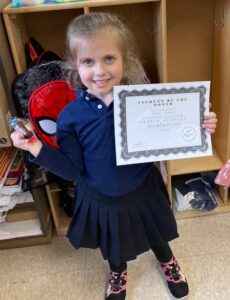
First Grade
The fabulous first graders learned alot this week. We examined cause and effect in fiction while reading the story “Click, Clack, Moo.” Students completed the Science unit about light, heat, and sound energy. They were surprised to learn that we can actually feel sound moving! In Math, we began simple multiplication facts. Students quickly mastered the concept of adding multiple groups. Finally, in Social Studies two students were acknowledged for their contributions to the Social Studies Fair-Aviel Raytburg and Aaron Elkaiev. Their explorer reports and presentation were quite stellar. We congratulate them.
Second Grade
This week 2nd grade started learning about money! We learned about the dollar and cent symbols, and how to add dollars and cents. We also began working on our compare and contrast essays, by creating a Venn diagram to use as a brainstorming tool. In social studies, we had a very interesting discussion about banks, interest, and investments! —
In science, students learned that matter goes through different changes and forms a new substance called a chemical change. 2nd graders enjoyed cutting and selecting different fruits and vegetables in a mixture.
Mr. A. Ferrera B.S.Ed
Generalist Teacher, 2nd grade
SIHA
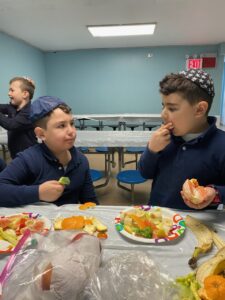
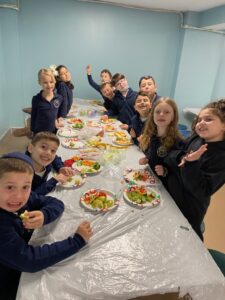
Third Grade
Third grade welcomes Ms. La Rocco, our new teacher, this week!
In science, students investigated and learned about volcanoes during a mini-lab. Students explored what’s inside volcanoes, what makes a volcano active or dormant, and the properties of rocks that are produced by volcanoes.
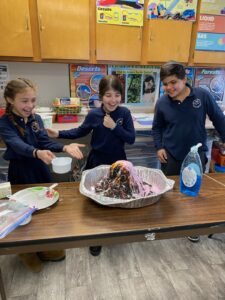
Fourth Grade
This week in math we worked on Geometry unit . Identified parallel and perpendicular lines. Measured angles and identified angles.
This week we also continued to practice for the math state test.
We are continuing to read our chapter book Number the Stars.
I’m Social Studies we read, discussed and answered questions about the people of the West.
In science students were able to define a natural resource; identify the main natural resources present in the Earth.
Fifth Grade
Greetings and salutations!
This week we continued our vocabulary and root word study. In grammar we learned about helping verbs and main verbs.
We practiced our writing in our Ready workbooks!
Lastly, we continued our novel study. I am glad to see that the 5th graders are enjoying their novels!
Congratulations on everyone for completing the Noetic Math Contest!
5th grade honors has been learning how to calculate the volume of rectangular prisms and applying the knowledge to challenging word problems.
The other 5th grade class has been reviewing essential skills with fractions, decimals, and geometry.
In science, students compared and classified matter according to its physical state. Learning about “Mixtures and Solutions” was the funniest part of the lesson. 5th graders were able to identify mixtures and solutions through different experiments. Using different methods of separation students were able to separate each substance that made up the mixture.
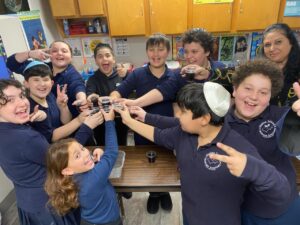
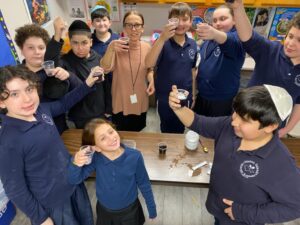
Middle School
Middle School ELA and Social Studies
6th SS and ELA
Greetings and salutations!
This week we learned about the many shenanigans of the Persian Wars. We particularly learned about the battles of Marathon and Salamis where Athenian cunning helped the Greeks defeat the Persians. We also learned about the valor of the Spartans at Thermopylae. Lastly, we learned about the decline of Persia after the Persian Wars. Onwards to the aftermath of the wars on the Greek mainland!
In ELA, we learned about perspective and practiced writing about author’s perspective. We also started our 7th grade vocabulary curriculum, and our new novel: Chasing Lincoln’s Killer.
7th ELA and SS
This week we continued our vocabulary study and practiced with irregular verbs. We also practiced our writing in our ready workbooks. Lastly, we focused on our thematic essay for Night. I am excited to begin the next novel on Monday!
In Social Studies, we finished our unit on the Constitution and are looking forward to our project next week!
8th ELA and SS
8th graders had a good week! In ELA, we are wrapping up our unit on Fahrenheit 451. In Social Studies, students started their Holocaust Research Paper in preparation for the Holocaust Remembrance Day.
Middle School Math
Congratulations on everyone for completing the Noetic Math Contest!
6th grade is finishing up their unit on algebraic expressions.
7th grade has finished their unit on functions and is preparing for the state test.
8th grade honors has been learning about quadratic equations and how to solve them with various methods.
The other 8th grade class learned how the volume of a cylinder relates to the volume of a sphere and a cone.
Middle School Science
6th grade Science
Students were able to describe the motion that provides the Earth with its day and night cycle;recognize the motion of the Earth that provides it with its seasons; understand the Earth orbits around the Sun and explain its year long cycle; Students explored how Earth’s rotation causes day and night. They also learn the scientific definition of revolution.
7th Grade Science
Students are investigating how our body systems work together to maintain homeostasis. They are currently taking a journey through the digestive system and discovering how nutrition and circulation play an important role in supplying our body with the nutrients it provides and how it actually gets through our bodies.
8th Grade Science
Students are preparing for the Living Environment Regent by taking practice exams and working through various aspects of this regent. In addition, students are investigating how energy flows through ecosystems, how biotic and abiotic factors affect those ecosystems and the importance of interdependence within each system.
Jewish History
7th Grade is learning about the greatest transition in history. The Jewish people went from being slaves to a nation that was ready to receive the Torah in only 49 days! During those 49 days, Hashem clearly demonstrated to the Jewish people His existence, power, and control. Hashem also showed how much He cares about and loves the Jewish people.
8th grade finished the unit about the Second Bais HaMikdash, its destruction, and the aftermath of the destruction. We have clearly seen many examples of the importance of listening to the Torah Sages, following the Torah, and staying united.
